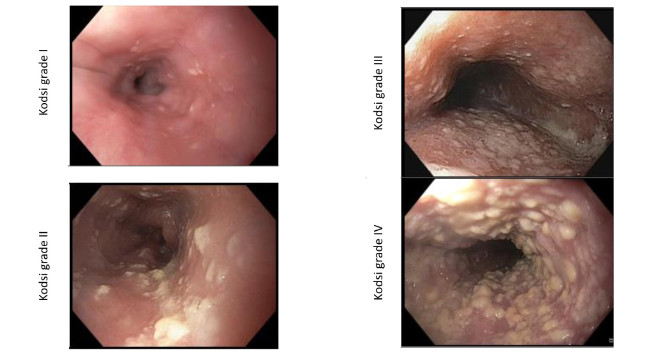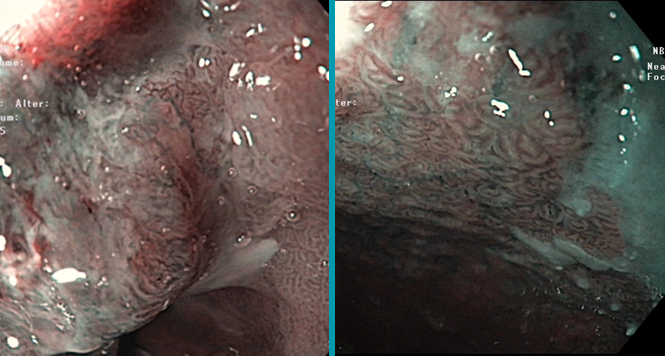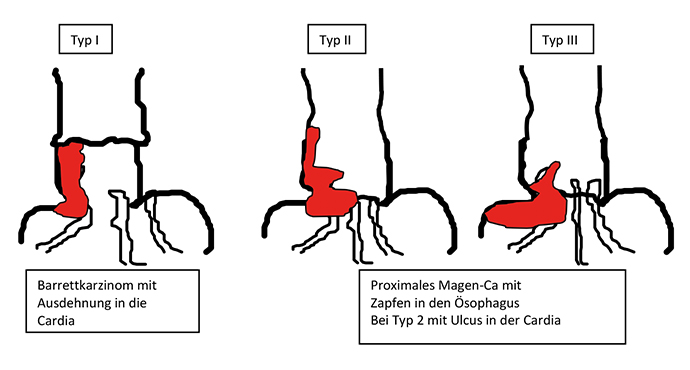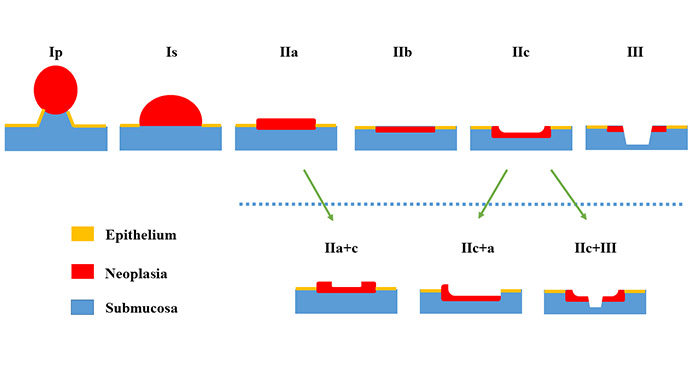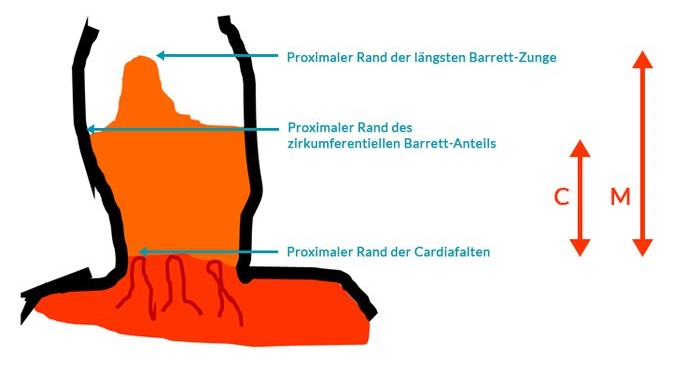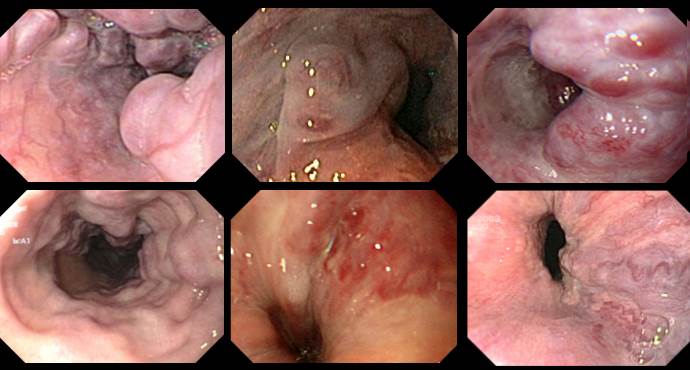The Forrest Classification is now used as a tool to identify patients who are at an increased risk for bleeding, rebleeding and mortality
Classifications
Classifiactions & Enitites
Forrest Classification
Kodsi classification of Candida esophagitis
Candidiasis is the most frequent form of infectious esophagitis. The characteristic white plaques, which are difficult to rinse off, are found in approximately 4% of
Hiatus hernias and the Hill classification
To allow more precise assessment of the competence of the esophagogastric sphincter mechanism, Hill et al. presented a practical classification in 1996.
The CAES classification of anastomotic insufficiency in the esophagus
The Surgical Working Group on Endoscopy and Ultrasound (Chirurgische Arbeitsgemeinschaft für Endoskopie und Sonographie, CAES) has developed and validated a classification of anastomotic insufficiency in
BING Classification Early Barrett Neoplasia
Multimodal therapy for early Barrett’s neoplasias, has become established as the standard therapy and is set out in national and international guidelines. These dysplastic lesions
Achalasia: Chicago Classification
Achalasia is one of the differential diagnoses in patients with symptoms of dysphagia. High-resolution (HR) manometry is now regarded as the diagnostic gold standard for
Esophagastric Junction Cancers (AEG)
Tumors of the esophagogastric junction should be classified not only according to the TNM system with regards to tumor penetration (T stage), presence of lymph
Paris Classification: Early Barrett Cancers
In the following, examples for superficial/early Barrett lesions of the esophagus are shown. Here, flat and sessilelesions are predominant, pedunculated tumors are rare. Sessile tumor
Paris Classification Early Cancer
Endoscopic treatment for early carcinoma in the gastrointestinal tract has in the meantime become evidence-based and has been incorporated into national and international guidelines
Paris Classification: Early Squamous Cell Cancers Esophagus
Examples of superficial/early squamous cell lesions in the esophagus are presented below. In the esophagus, flat lesions are predominant in the early tumors, and polypoid
Paris Classification: Early Gastric Cancer
Examples of superficial/early gastric tumors are shown below. In the stomach, flat lesions are predominant, often as combined lesions with a central depression (IIa+c). Sessile
Prague Classification Barrett Esophagus
The Prague classification was presented by an international research group in 2006 (1) and has since been regarded as the standard for measuring the length
Reflux Esophagitis: Los Angeles Classification
Gastroesophageal reflux disease with endoscopically identifiable lesions (erosions, stricture, Barrett’s esophagus) is defined as erosive gastroesophageal reflux disease (GERD). Fewer than 50% of patients with
Esophageal Varices
Various systems are available for classifying esophageal varices. Unfortunately, they only overlap or coincide partly. The official terminology used by the German Society for Digestive
Eosinophilic Esophagitis
A classification for eosinophilic esophagitis has not yet been included in the usual terminologies in the German-speaking countries. In the official terminology of the German
Fundic Varices
In contrast to esophageal varices, there is only one classification system for fundic varices, developed by Sarin et al.





